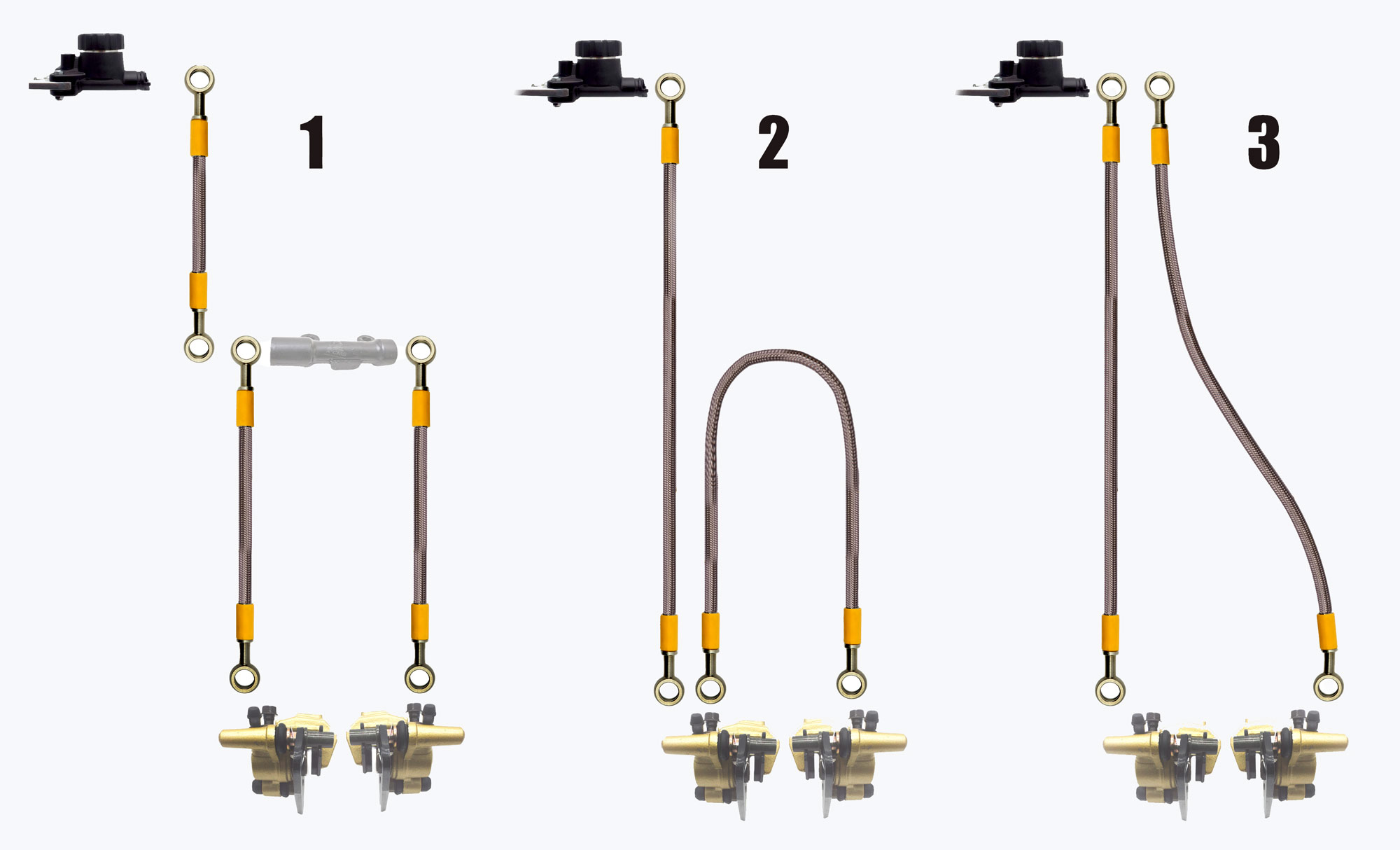
Here’s a more in-depth look at the three main front brake‑line setups on motorcycles:
1. Standard (“Tee” / piggyback) setup
In the traditional layout, a single hose runs from the lever to a T‑junction (usually near a caliper), then splits into two lines feeding each front brake. This arrangement is simple and cost‑effective, and common on road bikes. However, it introduces more fittings and potential air‑trap points, and the bleed can be a bit awkward since air tends to get caught above the splitter .
2. Crossover (“over the mudguard”) setup
Here, one line runs down to the first caliper, while a second loops over the mudguard to the other caliper—sometimes called a ‘hop‑over’ setup . It keeps the bars tidy with a single hose from the master cylinder. Many road riders appreciate the cleaner appearance, though it comes with drawbacks: the loop creates a high‑point where air can collect, making bleeding more difficult.
3. Racing (“dual direct”) setup
This configuration runs two separate hoses straight from the master cylinder to each front caliper—eliminating tees, crossover loops, and high‑points. Bleeding is easier since any air automatically rises to the reservoir. It's also the mandated layout for most track racing due to enhanced safety—if one hose is damaged (e.g., by flying debris), the other remains functional . While slightly more complex and potentially costlier (due to extra hose and banjo fittings), it offers superior reliability, bleed simplicity, and peace of mind—making it the gold standard for serious riders.